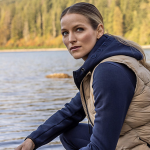By Thomas J. Ryan
Brian Dani founded Ski-N-Stuff in Mission Viejo, CA, in 1989 after a wrist injury sidelined a career in construction. After a few challenging years of learning on the job, an increase in business helped the retailer land nearby in a larger, 4,000-square-foot space just as snowboarding was emerging as a burgeoning sport. The store-which again relocated five years ago under a new name, CBS (California Board Shop) Boardshop, in Lake Forest-has since become the leading board shop serving Orange County.
Over his nearly two decades in the business, Dani has seen a host of changes, especially the rise of big boxes and the Internet, and the transformation snowboarding brought to snowsports. From the beginning, however, the foundation of the shop has been customer service and product knowledge.
“When we hire help, the first thing they are told is that people who enter the shop have the following sign printed on the forehead: Make me feel important,” says Dani. “The second thing they are told is to be honest. If they do not have the answer, tell the customer that they will get someone who has the answer, or they will find out. B.S. is not something we do.”
Going out of the way for customers means providing superior shop service, including on-the-spot or overnight tune-ups or repairs. The shop also provides one-day travel to resorts, in both directions, on rentals.
After using extensive print advertising, and even advertising with local high school booster clubs, CBS Boardshop eventually realized that word-of-mouth references to its knowledgeable and helpful staff generated the most traffic.
“Those [customers] that were brought in via some teaser advertising were not the type that would become our loyal customers. They were only those looking for the deal,” notes Dani.
The store also enhanced its appeal with a commitment to carrying only top-end lines and wide selections. Most of its hardgoods are not made in China.
“We have 20 to 30 brands and we usually have the full line-up of each,” says Dani, who now runs the store with his son, Mark. “Our competition has three or maybe four brands in their offerings. Even within some of the same brands, the vendors do not allow our competition to retail the higher-performing products. Our competitors do not have the product knowledge to be able to define the product to the user.”
As the store began targeting more snowboarders, brand assortments turned younger and trendier. In Southern California, Burton used to stand alone as the “in” brand. But now, explains Dani, “Things are trendier so we have to be on top of the trends or we have to establish the trend.” His trustworthy staff has been able to drive demand for products just from the store.
“In the past two seasons, we have taken a product that had sold only a few items in the area, to be among the most in demand,” says Dani. “This is only possible via having the knowledge on how to sell the product.”
Merchandising now requires a greater rollover of brands than in the past. CBS Boardshop continues to carry some core brands to meet the expectations of its loyal customers. But the store also continually experiments with new brands, sometimes losing money on labels that never take off. On the other hand, brands that sell well often find their way to big box stores that are given large discounts and soon become less desirable for CBS Boardshop.
When this happens, says Dani, “We have to once again find alternate products, because we cannot compete price-wise. Its a big challenge to determine the next viable alternatives.”
The smaller ski shop, according to Dani, still serves a vital role for retail, particularly in introducing new products. The shop also offers convenience to consumers that do not want to “travel 20 miles to the big box store.” However, Dani admits that its becoming ever tougher to compete against big box stores and the Internet due to consumers fixation on lower prices.
“With the consumer so focused on the best price and shopping on the Internet, we are essentially becoming the showroom of vendors,” says Dani.
For this reason, Dani surmises that his store will have to place a greater emphasis on service and repairs, although he also notes that, “Finding competent help with know-how is becoming difficult. Even staffing people willing to learn is becoming difficult, unfortunately.”
Dani also laments that the skiing has lost its pull as the family centered activity he first fell in love with in the 1980s. Resorts at first banned snowboards, which prevented snowboarding kids from joining their skiing parents on the slopes. Although resorts eventually accepted snowboarders, many have since gone to the other extreme with in-your-face marketing tactics. This makes many parents not only apprehensive about allowing their kids to participate in snowboarding, but also about returning to the resorts themselves.
“The resorts of North America were built on the backs and visits of families; now all they focus on is the extreme,” observes Dani. “And the most important aspects are not even considered. Its all about what happens after the day on the snow: relating the adventure, the bonding, having fun, and sharing the love of each other.”
Dani also suggests that the snowsports industry could do a better job of driving participation, which has remained constant over the past two decades despite a larger population. Lowering lift ticket fees could help, as could efforts to subsidize beginners and families getting together on the slopes.
Making the sport easier to learn would also be beneficial. Statistics continue to reflect that close to 90 percent of new skiers never return a second time. To combat this problem, Dani has a side business selling the Bstinger, a tailless ski. Manufactured in the U.S., the Bstinger replicates past tailless styles like the Scorpion (popular in the late 70s and early 80s) that proved much more effective in shortening the learning curve of beginners. Dani has also set up artificial ski ramps to serve as learning venues for skiers and snowboarders. According to Dani, making the first experience easier could help return snowsports to its natural role as a core family activity.
“If one were to analyze skiing as a sport, it is the only sport in which young and old can enjoy the activity on an equal level, with little tykes sometimes skiing faster past mom and dad, and grandparents skiing along with mom and dad,” says Dani. “This is a picture that is now missing at our resorts. The picture seen now is a young person flying in the air.”















